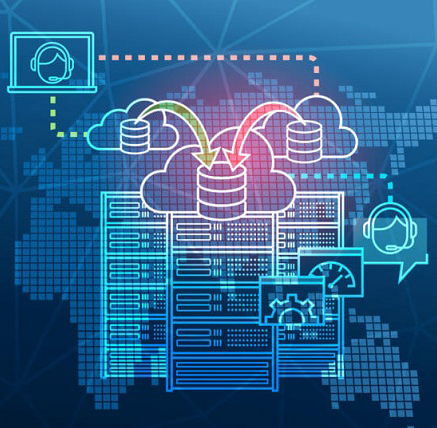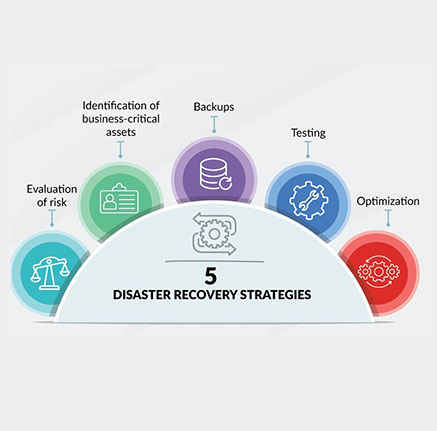Disaster Recovery Experience
Today, our businesses run digitally and are susceptible to disaster even with increased security. Business demands disaster recovery and continuity services in order to ensure seamless functionality and operations. Our experts will manage disaster recovery in a timely and effective manner. Our Disaster Recovery solution fully covers BC DR aspects by adopting multiple industry-proven methodologies depending upon business RPO and RTO definitions.
The disaster recovery and migration process consist of the duplication of business applications and infrastructure items to a secondary data center and launching failover from one of the restore points.
With many cloud services offered as Disaster Recovery sites, customers can create a DR site in one or more public clouds. Customers will get related reporting & monitoring services accordingly.


BENEFITS
WHY US
Learn Here The Main Reasons Why You Should Choose Us
- We provide comprehensive disaster recovery planning to minimize downtime and data loss.
- We create a program that accelerates your strategic execution and growth goals.
- Consistently hit strategic objectives and revenue targets, and grow, year over year.
Disaster Recovery Types
There are several types of disaster recovery methods, and an organization can choose one or combine multiple techniques to suit their situation.
How Does
Disaster Recovery Works
Disaster recovery depends on replicating data and essential computer processes in an area that will not be impacted by the disasters in question. In the event a server goes down due to a natural disaster, the business has to make sure it can recover any lost data at a secondary location where the data has been backed up. In an optimal setup, the business can transfer all essential computer workloads to the remote location with as little downtime as possible.
A disaster recovery plan should account for disasters that are both geographically dependent and those that occur regardless of physical location. For example, if a datacenter used for disaster recovery is a mile away from your place of business, it may be adequate to help the organization recover from a cyberattack. But if there is extensive flooding or a hurricane, there is a high chance the data-center will be impacted as well.
Disaster Recovery Plan Elements
Disaster recovery involves delving into a number of methodologies and technologies. However, every effective disaster recovery strategy involves the following five elements.
The organization assigns a team of people responsible for making, implementing, testing, and managing its disaster recovery plan. The plan must outline the role of each member of the organization, as well as their responsibilities in the event of a disaster. If a disaster happens, the team members must have predetermined methods of communication with each other, employees, customers, and vendors. The communication plan should account for likely infrastructure failures that may negatively impact email and other methods of conveying information.
The organization must figure out the various hazards that are likely to necessitate a disaster recovery plan. Then the appropriate measures should be designed based on the event type. This may vary depending on geographic location. A range of natural disasters—even those uncommon to the area—should also be accounted for. When considering what to do in case the organization suffers a cyberattack, the functionality of the systems and endpoints at risk must be included in the disaster recovery plan, as well as essential and sensitive data.
An effective disaster recovery plan documents the systems, data, applications, and related resources that are most essential to maintain business continuity. The plan should also outline the steps needed to recover and protect important data.
First, the team needs to figure out what must be backed up or moved if a disaster hits. The organization also has to make sure the backup methods are established, as well as who will be responsible for creating the backups and performing any restorations or migrations. The plan should involve a recovery point objective (RPO), which dictates how frequently backups are made, and a recovery time objective (RTO), which outlines the maximum acceptable amount of downtime the organization is willing to tolerate after a disaster. The data from these metrics will serve as a guide as the IT team determines disaster recovery objectives.
The recovery team is responsible for making sure the disaster recovery system is ready for an event by continually testing it and updating its various elements. For cyberattacks, for example, the team must make sure the security measures in place are up to date and reflect the most recent cyber threats on the landscape.

Send Us a Message and Learn More About Our Services
Let's get started with your digital transformation.
